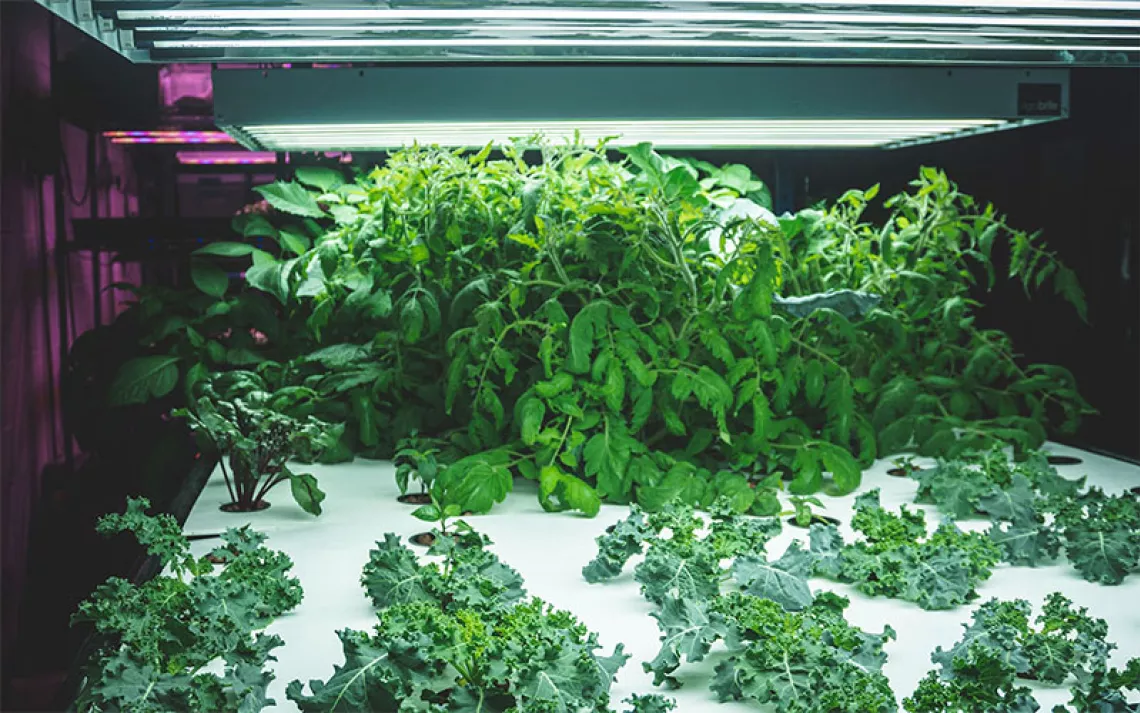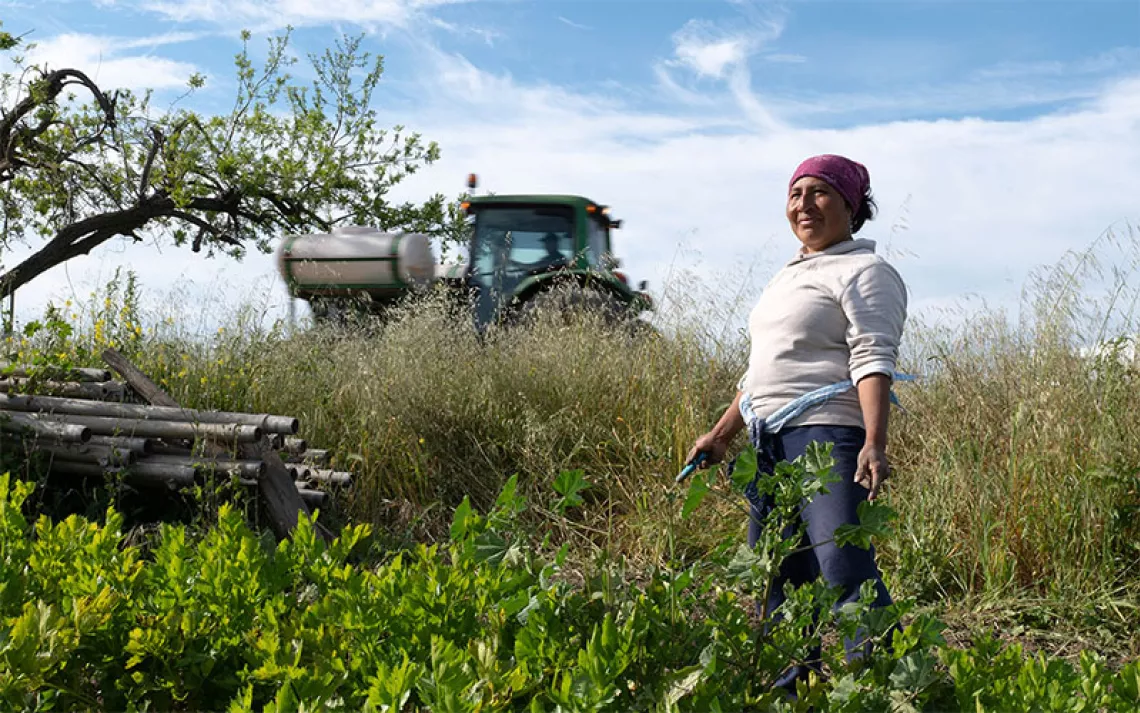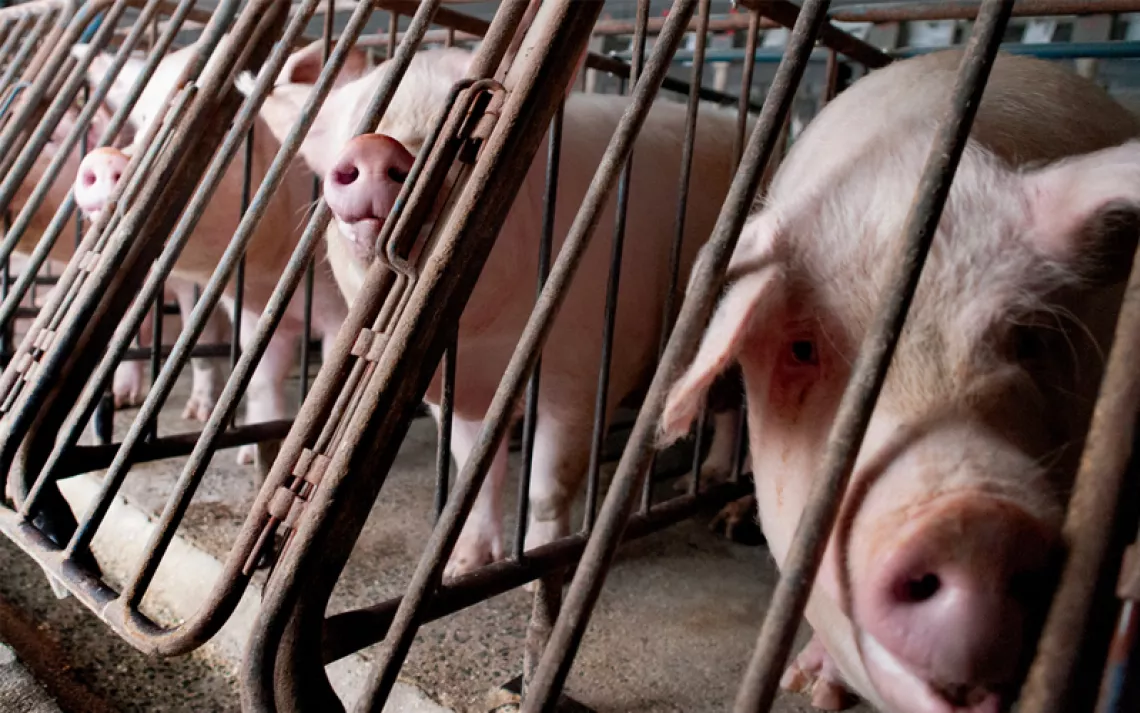Hydroponics May Be the Future of Urban Farming
Farmers want to grow gardens in urban warehouses. Can it work on a commercial scale?
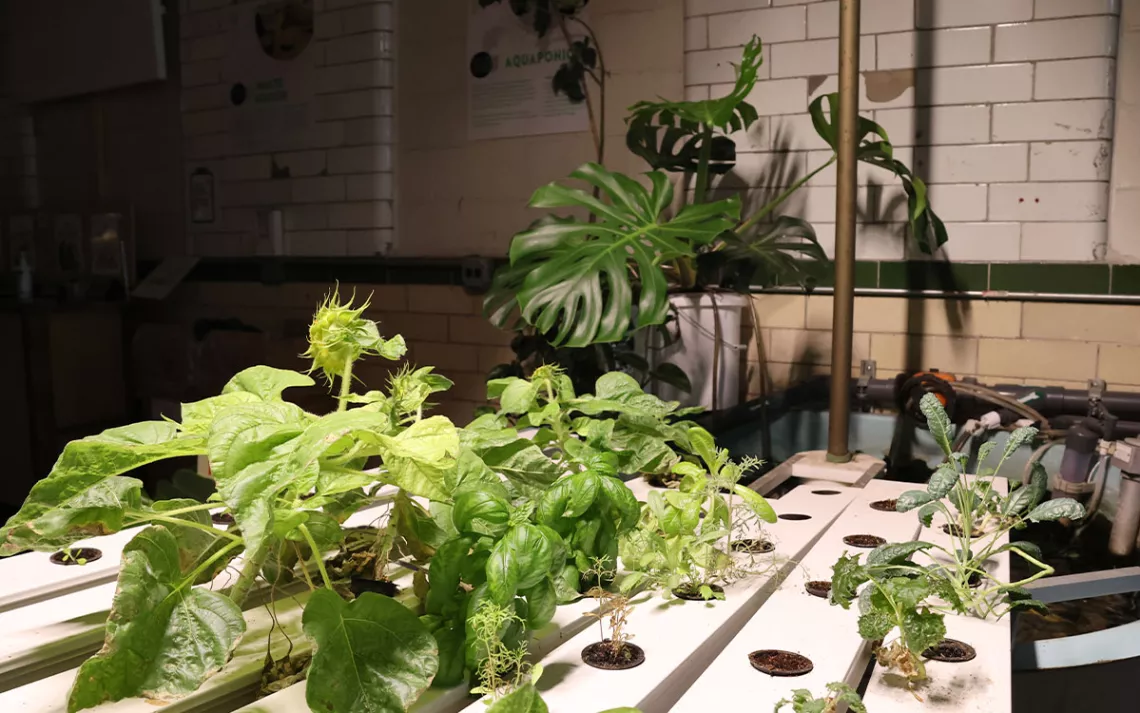
Several vegetables and a monstera plant grow in Plant Chicago's aquaponic system. | Photo by Lily Carey
Chicago is home to hundreds of urban farms and gardens, growing fresh produce for communities in need. Some are nestled in public parks, while others are maintained by neighborhood organizations, but only a handful resemble the urban farm operated by nonprofit organization Plant Chicago. The entire farm is housed inside a renovated 20th-century firehouse. Just inside the door, a stack of wooden cubes arches over a doorway between two rooms, interconnected with a web of tubes that carry water from cube to cube. Suspended in water, bathed in eerie multicolored LED light, a tangle of vines spills over the container’s edge, its leafy tendrils nearly reaching the ground.
This unconventional style of farming is known as hydroponics—the practice of growing plants without soil. Gardeners grow plants directly in pools of water, making it easier for plants to get what they need, and for growers to conserve resources.
While hydroponic farming has long been used for food science experiments, researchers have increasingly begun to explore whether it could be the next big thing for urban agriculture, condensing all the benefits of an outdoor urban garden into a more efficient, less wasteful indoor space.
“You're talking about systems that fill an entire warehouse ceiling,” said Eric Weber, Plant Chicago’s director of operations. “And that's where something like hydroponics can come in and bring some of that industrial-scale efficiency to urban agriculture.”

How to Start Your Own Hydroponic Garden
The latest trend in urban farming, simplified for at-home gardeners
Growing plants in water rather than soil actually uses a small fraction of the water used in traditional farming—since there’s no soil to absorb water, all of it goes directly to the plants. Currently, agriculture accounts for over 70 percent of global water consumption. With the planet’s freshwater supply dwindling and demand for it increasing, hydroponics could help fill an urgent need to slash water consumption in farming.
Hydroponics is especially well suited to urban environments where land is scarce because it can happen almost anywhere that has access to electricity and running water. Plant Chicago’s renovated firehouse is located in Back of the Yards, a Chicago neighborhood known as a historic manufacturing hub that’s faced disproportionate levels of industrial air pollution. Yet inside the firehouse’s concrete walls, snap peas and tomatoes are sprouting faster than Weber can keep up with them. One massive planter, which houses several thriving aloe plants, has been going strong for eight years, they said.
Hydroponics doesn’t have to be constrained to urban environments, however—it can be effective in almost any setting, regardless of population density. “In Illinois, you’re surrounded by corn and soybeans for miles,” said Liam Reynolds, a doctoral student at the University of Illinois. “Imagine if you could put in a greenhouse to grow lettuce and other vegetables for the local community.”
Reynolds, who studies agricultural and biological engineering, is researching how to use wastewaters from biofuel production in hydroponics. Reynolds works with another research team at the university that studies hydrothermal liquefaction, a type of high-temperature biofuel production that creates liquid byproducts. By diluting this wastewater and supplementing it with organic nutrients from aquaponics, or indoor fish farming, Reynolds was able to grow lettuce with wastewater just as effectively as a slate of control crops that used normal water.
What drew Reynolds and his colleagues to hydroponics was the potential to create a “full loop” in their research, using wastewater to generate food. But, like many others, he’s most excited about the potential for hydroponics to combat food scarcity in both urban and rural areas. In Chicago, one in five households struggles with food insecurity, with people of color and low-income people at higher risk. And according to a July UN study, over three-quarters of the world’s food-insecure population live in urban areas. Relocating food production to urban centers, where people often need it most, seems like a no-brainer, Reynolds said.
Yet maintaining hydroponic systems in cities can be a difficult task. “It's hard in a city where land is expensive, utilities are expensive,” Weber said.
From climate control to lighting, nearly every element of indoor urban farming requires electricity use—and that power consumption adds up. And while Plant Chicago is a nonprofit that’s funded primarily through grants, the expenses that come with heavy power consumption can make hydroponics difficult to sustain as a business model, at least in a densely populated city. Weber said that over the past few years, they’ve watched as other hydroponic farms in Chicago have either folded or moved out to the suburbs in search of cheaper utility and land costs.
“I really like controlled-environment agriculture for its food security benefits,” Reynolds said. “But it can never outcompete traditional agriculture.”
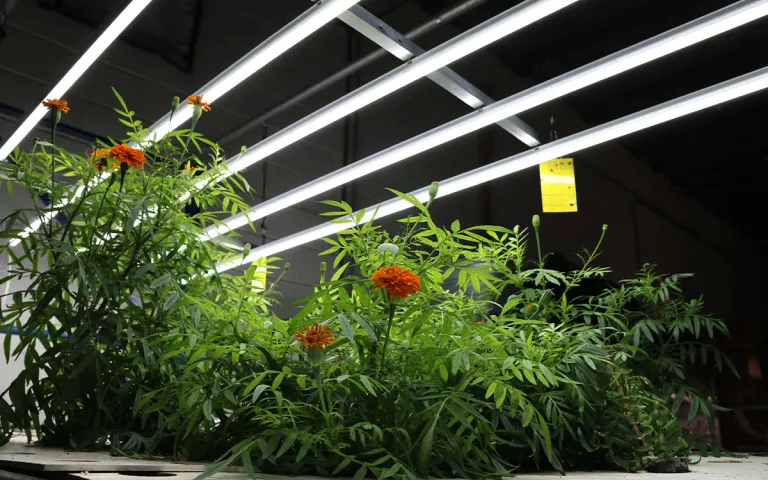
Marigolds grow in a hydroponic bed at Plant Chicago. The flowers were harvested for use in Day of the Dead celebrations. | Photo by Lily Carey
He’s still hopeful that hydroponics has a future in food deserts—and in recycling wastewater for farming. Paul Davidson, an associate professor at the University of Illinois and a coauthor on Reynolds’ recent study, said that his lab has already seen strong results by cultivating crops in untreated wastewater, and that they have plans to experiment with treated wastewater in the future.
Urban agriculture can leave a carbon footprint that’s up to six times greater than that of conventional agriculture, a team of University of Michigan researchers found in March. Even so, the benefits of farming with 90 percent less water than in traditional agriculture are immense, Davidson said, and could outweigh the high demand for power.
“Even though water treatment would require energy consumption, because hydroponics uses so little water, it would still be lower than the footprint of traditional agriculture,” he said.
For now, experts say it’s about striking a balance. Weber said they see the potential for growers to create commercial-scale hydroponics operations—but balancing a larger urban farming operation with the energy efficiency tradeoffs remains a challenge that few have conquered.
“It still is in the realm of … ‘Oh, hey, look at this cool thing. That could be the future.’ But there's a lot more ifs, ands, or buts to figure out to make it as feasible as people claim it could be,” Weber said. “I think, energy and water expenditure aside, the part that intrigues me the most is the ability to grow food where people need to consume the food.”
 The Magazine of The Sierra Club
The Magazine of The Sierra Club
